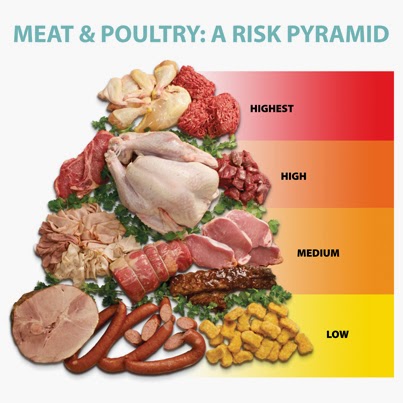| Online: | |
| Visits: | |
| Stories: |
Which Cut of Meat Is Least Likely to Make You Sick?
by Kiera Butler
Mother Jones
Every time you eat, you're rolling the germ dice. According to the Centers for Disease Control and Prevention, 1 in 6 Americans contracts a foodborne illness annually; 128,000 are hospitalized, and 3,000 die. Pathogens from meat kill more people than those from any other food group. A CDC study found that between 1998 and 2008, contaminated meat was responsible for 29 percent of all deaths from foodborne illness (23 percent of deaths were from produce, 15 percent from dairy and eggs, and 6.4 percent from fish and shellfish).
Most carnivores don't let the risk of sickness stop them from eating meat—and a lot of it. The average American eats nearly 271 pounds of meat a year. But here's the good news: When it comes to foodborne illness, not all meats are equally risky. So which kinds are safest? A few tips for choosing the least germ-ridden cuts:
1. There is no such thing as risk-free meat. Or risk-free food in general, notes Donald Schaffner, a professor of food microbiology at Rutgers University. If the food isn't cooked sufficiently, or if the preparation area isn't clean, “it doesn't matter whether you're eating chicken, steak, or pork,” he says. “Food prepared in an unclean environment is always going to be high risk.”
2. But some cuts are more likely to make you sick. In 2013, researchers from the Center for Science in the Public Interest (CSPI) analyzed data about outbreaks, illnesses, and hospitalizations from foodborne pathogens in particular kinds of meat between 1998 and 2010. The meat risk pyramid to the right illustrates their findings.
Read more »
Every Day is Earth Day
Source: http://www.riseearth.com/2015/02/which-cut-of-meat-is-least-likely-to.html





